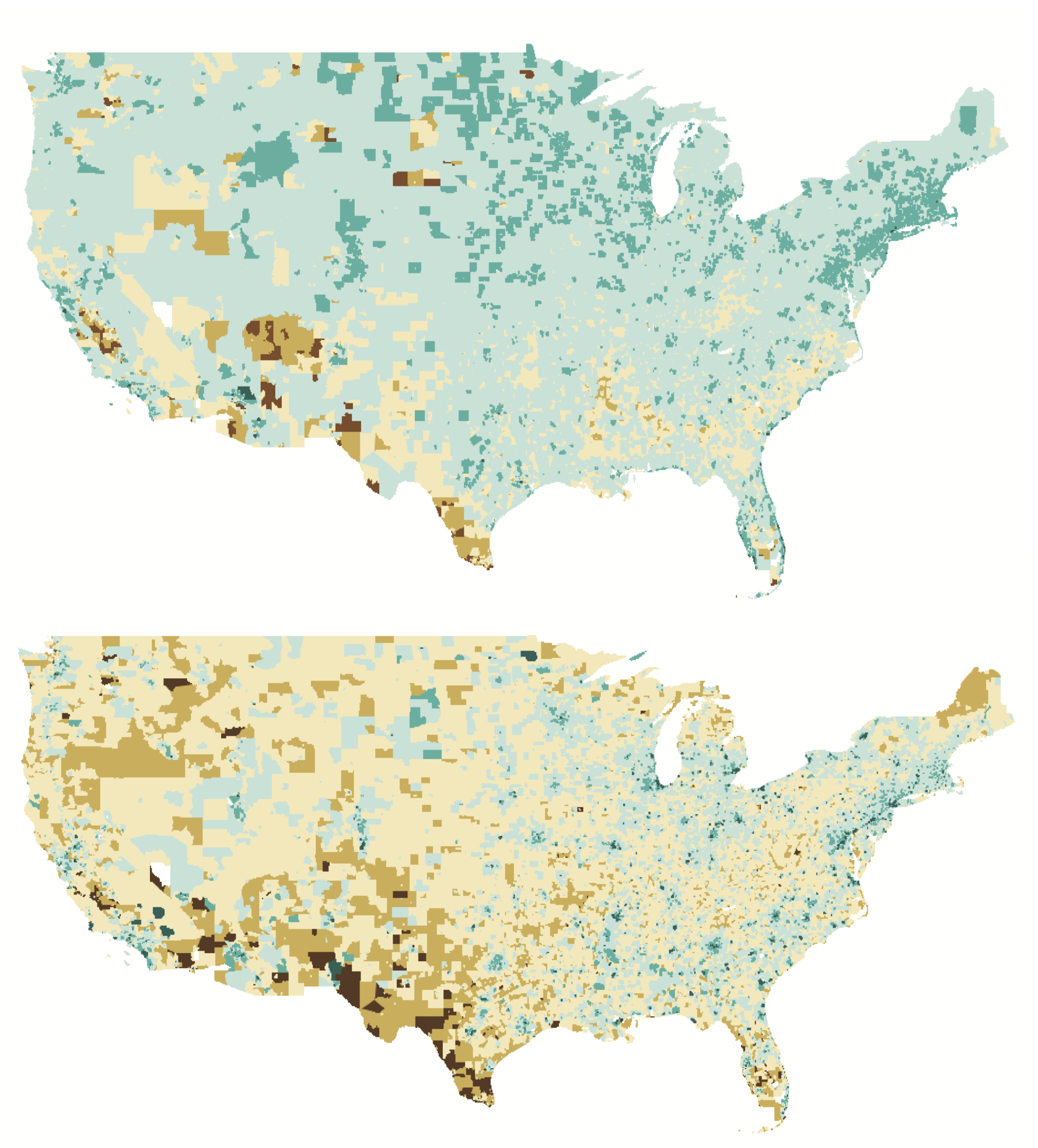The U.S. Social Determinants
of Health Atlas
Social Determinants of Health (SDOH) are the conditions in the places where people live, learn, work, and play that affect a wide range of health risks and outcomes. While researchers have long known that socieconomic indicators like poverty and education impact health, it's less clear why it matters in some places more than others.
Our study looked at all the populated census tracts on the United States mainland to look for patterns across fifteen common SDOH indicators. We grouped these as four dimensions of SDOH, and then summarized all tracts as SDOH neighborhood types. The data provided here are the analytic results of a study by University of Chicago and AHA Center for Health Innovation researchers.

Study Citation.
Kolak, Marynia, Bhatt, Jay, Park, Yoon Hong, Padron, Norma, and Molefe, Ayrin. "Quantification of Neighborhood-Level Social Determinants of Health in the Continental United States." JAMA Network Open. 2020;3(1):e1919928. doi:10.1001/jamanetworkopen.2019.19928
Dimensions of Social Determinants of Health
Socioeconomic Advantage
Driven by classic measures of socioeconomic advantage, like poverty, minority status, health insurance status, single parent households, and educational level. The strong correlation between minority status and poverty may reflect the role that racial segregation has played in perpetuating environments that are associated with health disparities.
On the Map:
Lower values have more disadvantage; high values have more advantage.
Limited Mobility
Driven by areas with high proportions of seniors and persons with disabilities, and fewer children Reduced mobility issues are factors in both resource accessibility and social isolation needs, and reflect complex interactions between aging, disability, and transit. Ongoing research seeks to identify areas with a high concentration of older populations to improve transportation policy, social service facilities, and planning.
On the Map:
Lower values have less mobility; high values have more mobility.
Urban Core Opportunity
Dominated by population-dense areas with higher per capita income, more renters, higher rent burden, households without a vehicle, and fewer children. Characterized by compact geographies, dense urban centers, and strong economies. May be highly walkable and diverse, but higher cost of living may impact the vulnerable disportionately.
On the Map:
Lower values have less opportunity; high values have more opportunity.
Mixed Immigrant Cohesion
& Accessibility
Mostly immigrant or multilingual groups with traditional family structures and multiple accessibility stressors. Dominated by higher proportions of families with limited English proficiency, older adults and crowded housing, lack of health insurance, lower educational attainment, and fewer single parent households.
On the Map:
Lower values have more multilingual families, traditional family structures, and/or accessibiility stressors.